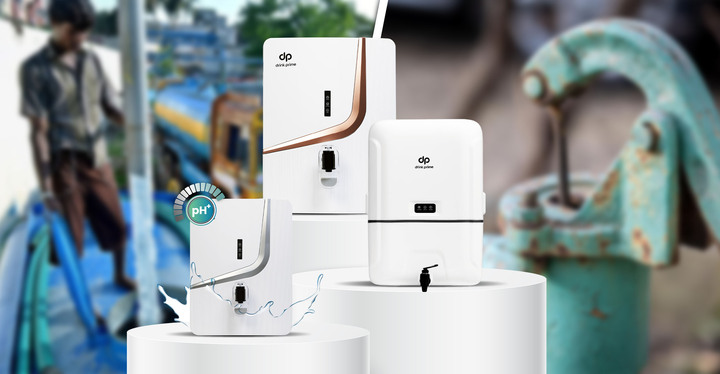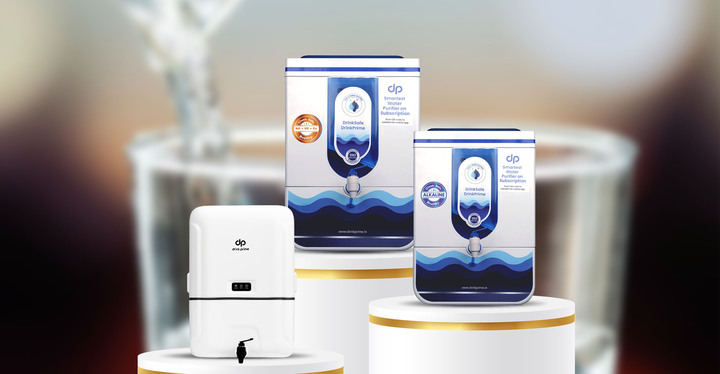
Doyou think your water is terrible in quality? Well, you’re probably right. After all, 70% of the country’s water is contaminated.
Unfortunately, it doesn’t matter if your water is from a public source like the municipality or a private source like a well. If your water looks turbid, or has an unusual odour or colour, there’s a high chance it’s contaminated.
Bad quality water can contain toxic chemicals, heavy metals, or even pathogens that can adversely affect your health. Read on to find out how you can overcome bad water quality in your area.
How Bad Water Quality Can Affect You and Your Family
As mentioned earlier, bad quality drinking water can have a significant impact on you and your family’s health. Depending on the type of contaminant, you can experience serious health issues.
Microbes
Consuming water that’s undergone poor sanitation can lead to diseases such as diarrhea, cholera, dysentery, typhoid, hepatitis A and much more.
When you consume poorly disinfected water, the most common symptoms would be forms of gastrointestinal issues like nausea, diarrhea, vomiting, or abdominal cramps. While these are the most common, it can take at least 24 to 48 hours for you to develop these symptoms.
After all, it does depend on the pathogen load in the water you’ve consumed. Consuming a drop of bad quality water may not affect you as much as drinking an entire cup of the same water.
Of course, depending on the intensity of your reaction, you may need medical assistance. Additionally, the severity of your reaction depends on your immune system as well. If you or your family are immuno-compromised, then we recommend you visit the doctor the moment you have these symptoms.
Heavy Metals
Now, bad-quality water can also contain heavy metals like arsenic, lead, mercury, and many more. These heavy metals that may be present in the soil and rocks can find their way to drinking water with water runoffs during rain. They may also be naturally present in your water source.
Either way, these heavy metals can have long-term and even irreversible effects on you or your family. Consuming inorganic Arsenic, for example, can lead to an increase in the risk of cancer in the liver, bladder, and lungs.
Did you know drinking water with Arsenic can even lower the IQ in children? Pregnant women can even experience fetal malformations by drinking water that’s rich in heavy metals.
Chlorine
Chlorine, on the other hand, is commonly present in the drinking water that’s supplied by the municipality as it’s used to disinfect water by killing bacteria and other microorganisms. However, it can affect you too. The milder symptoms can range from minor irritation to the eyes to extensive reactions like upper respiratory tract illnesses.
Consuming water with really high Chlorine content can cause serious chest pain and vomiting. Chlorine is also known to affect the DNA in the body. So, consuming Chlorine-rich water regularly can cause cell mutation and even result in autoimmune diseases.
Of course, there are a ton of other contaminants that can affect you. However, these are the most common.
So, how exactly can you overcome bad water quality in your area?
Well, the best way to overcome bad water quality is to start following these steps:
Step 1: Inspect Your Water Quality for Contaminants
Before you even think of a solution, you need to figure out if there is a problem with your water quality. You can start by inspecting the water. And yes, it’s not that difficult to conduct a basic inspection.
If in doubt, always ask yourself the following questions: Does it contain sediment? Does it have an unusual taste, color, or odour?
If you’re not willing to taste or smell it, you can try alternative methods of inspection. You can check to see if it’s staining your clothes, dishes, or any of your fixtures.
Of course, sometimes you won’t be able to see or smell anything. However, the water may still contain a significant amount of microbes. In this case, you’ll have no choice but to get your water tested professionally.
Step 2: Get the Right Information
Regardless of where you live, it’s always best to understand where you’re drinking water originates from. Is it the municipality water? Or are you getting it from your well? It’s important to keep a track of this as you can learn a lot about the quality of water and understand if it’s safe to consume directly.
For instance, if your water comes from a public source like the municipality water reservoirs, it’s much easier to get data regarding the quality and even reports regarding contaminants.
More importantly, you don’t have to take drastic steps to get the municipal water tested unless somebody falls ill or if the water is unusual in its characteristics. In this case, it’s more likely an issue with the plumbing.
However, if your water source is private, you might have a bit of trouble figuring out the source of the water and the type of contaminants that may be present. Even if it is seemingly a natural well, it may be connected to a different groundwater pocket that may be filled with heavy metals.
So, you can start by doing a bit of research by yourself. Although Google would be a good place to start, your city’s water board should have relevant information regarding the city’s water bodies.
However, if it’s extremely difficult to figure out or if you don’t have the time, you can hire a professional from a lab or even purchase a DIY water testing kit.
Step 3: Test Your Water
This step is extremely important. If you do find some sort of an issue with your water, you have no choice but to get it tested. Especially, if there is a visible change or even if there’s an overpowering odour.
Unfortunately, this kind of problem won’t go away even if you heat the water before you drink it. So, it’s best to get the water tested professionally as this will help you take the necessary next steps. We recommend you approach a professional lab if you see extreme changes in your water.
The lab will send out professionals to collect samples and they’ll test the water for all possible contaminants and establish if it’s safe for consumption.
However, if you’re planning to get a water purifier, you don’t have to worry too much. A technician from a good water purifier brand will conduct a basic test to see if it’s safe for consumption. You can always contact the water board for assistance as well.
You should only consider contacting a lab or the water board in extreme cases where there’s a chemical odour or if there’s a significant change in colour. If there’s sediment or low levels of TDS, a water purifier can handle it.
Step 4: Get a Water Purifier
In most cases of water quality issues, you’ll have to depend on a water purifier to get rid of the contaminants.
However, if it’s the bare minimum of contaminants, heating the water should suffice. Of course, you will have to spend a considerable amount of time to heat or boil the required amount of water every day.
But if there are sediments, odour, rust, heavy metal content, and other types of toxic content, you will definitely have to buy water treatment equipment.
Although there are alternative solutions like using water cans or single-use water bottles, these are not extremely safe or long-term solutions.
While they seem like an inexpensive option, water filled in the plastic cans do come from a questionable source. And accessing single-use water bottles consistently can significantly amp up your carbon footprint. Also, just because water is in a sealed bottle does not mean it’s clean and safe water.
So, is a water purifier the best option?
All in all, a water purifier is the right call. It is equipped with an effective filtration system that can get rid of all types of organic, inorganic, and microbial contaminants.
However, it’s not the most perfect solution to this problem. A regular water purifier, unfortunately, purifies all qualities of water in the same manner. So, you would either get under-purified or over-purified water. Both of which are terrible for your health.
Then what’s the perfect solution to this problem? Well, a customised approach is always the most ideal for this type of problem where the water qualities fluctuate depending on the geographical area.
While it seems like this is an expensive solution or far out of reach to the regular household, there is a water purifier brand that customises their device based on your source water quality. So, you can expect perfectly purified water every time. Moreover, this water purifier is extremely affordable as it works on a subscription model.



